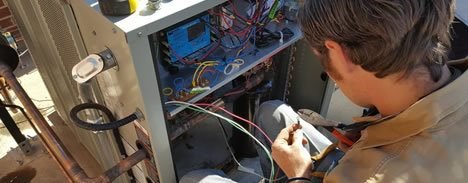Refrigeration
B.I.M.S., Inc. performs repairs for many different types of refrigeration systems, as seen below. Call us today if you have any questions or click on the links below to learn about each system.
Call B.I.M.S., Inc. at (833) 879-2467 today for all of your HVAC-R needs!
Capacity controls are valves set to modulate how often a system cools based on pressure. These controls work off Gay-Lussac’s Law, that pressure and temperature are directly related to each other (i.e., if the temperature rises, the pressure rises; and if the temperature drops, the pressure drops). These capacity control valves can be set to introduce hotter gas from the line exiting the structure (discharge line) into the line entering the structure (the suction line) to increase pressure when the valve senses the pressure dropped too low.
Commercial refrigeration refers to any cooling or freezing unit that can be smaller, standalone cooler or freezers (termed “reach-in” coolers/freezers) or large rooms (termed “walk-in” coolers/freezers). The walk-in coolers/freezers are smaller scale than warehouse refrigeration, but can still be large, such as the refrigerated milk room in a grocery store.
Scientific refrigeration refers to coolers and freezers that are able to be used for very specific processes. These refrigerators can be small, stand-alone units, termed “reach-in” or as large as is necessary, and can be controlled in minute increments to temperatures as low as -164o C (or lower for custom types). The types that bring temperatures very low are termed low temperature (LT) or ultra-low temperature (ULT) refrigeration.
Warehouse refrigeration can be anything from small, stand-alone units to entire warehouses devoted to cooling or freezing. Warehouse cold storage applications include cooler or freezer vaults, blast freezers, drive-in coolers, and drive-in freezers. This type of refrigeration method is seen in distribution plants, production plants, laboratories, and morgues.
Wine coolers are similar to walk-in coolers, but are typically made out of a preexisting room. Because of temperature differences between wine coolers and the structure they are built within, the rooms are built with 1) a vapor barrier on both sides of the walls surrounding the cooler and 2) closed-cell foam insulation within the walls surrounding the cooler to prevent condensation and humidity problems.



